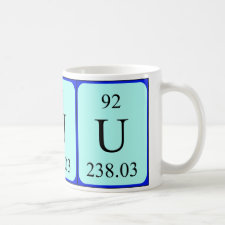
Authors: Monier M, Abdel-Latif DA, Mohammed HA
Article Title: Synthesis and characterization of uranyl ion-imprinted microspheres based on amidoximated modified alginate.
Publication date: 2015
Journal: International Journal of Biological Macromolecules
Volume: 75
Page numbers: 354-363.
DOI: 10.1016/j.ijbiomac.2014.12.001
Alternative URL: http://www.sciencedirect.com/science/article/pii/S0141813014008058
Abstract: Surface ion-imprinting technique was utilized for the preparation of surface ion-imprinted chelating microspheres based on amidoximated modified alginate (U-AOX) in presence of uranyl ions as a template and glutaraldehyde cross-linker. Different instrumental techniques such as elemental analysis, scanning electron microscope (SEM), FTIR, X-ray photoelectron spectroscopy (XPS) and X-ray diffraction spectra were employed for full investigation of the manufactured materials. The synthesized microspheres displayed a higher ability for selective extraction of UO22+ when compared to the non-imprinted microspheres (NI-AOX). In addition, the essential parameters such as pH, temperature, time and initial uranyl ion concentration were evaluated in order to optimize the conditions of the adsorption process. The results indicated that pH 5 was the best for the UO22+ removal, also, the adsorption was endothermic in nature, follows the second-order kinetics and the adsorption isotherm showed the best fit with Langmuir model with maximum adsorption capacity of 155 ± 1 and 64 ± 1 mg/g for both U-AOX and NI-AOX respectively. Desorption and regeneration had been carried out using 0.5 M HNO3 solution and the results indicated that the microspheres maintained about 96% of its original efficiency after five consecutive adsorption-desorption cycles
Template and target information: uranyl ion, uranium, UO22+
Author keywords: alginate, grafting, acrylonitrile, Amidoxime, Ion-imprinting



Join the Society for Molecular Imprinting

New items RSS feed
Sign-up for e-mail updates:
Choose between receiving an occasional newsletter or more frequent e-mail alerts.
Click here to go to the sign-up page.
Is your name elemental or peptidic? Enter your name and find out by clicking either of the buttons below!
Other products you may like:
 MIPdatabase
MIPdatabase









